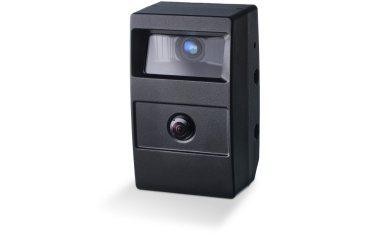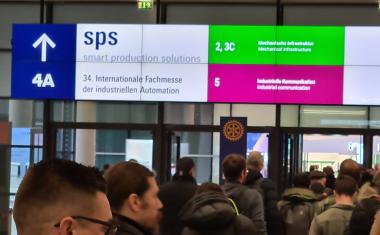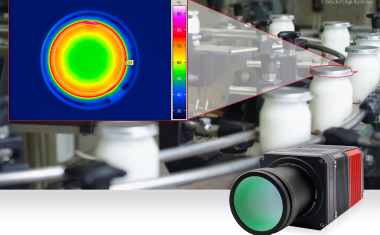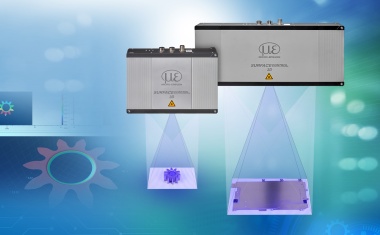The Most Precise Robot in the World?
Machine tools still set the tone in terms of precision. But robots could soon challenge them for this top position in some areas of application. How? Answers are provided by the cooperation between the cycloidal gearbox specialist Nabtesco and the robot control expert Keba.
Nabtesco's cycloidal gearboxes are among the most powerful gearboxes on the market. Robotics in particular is no longer imaginable without this precise and torsionally stiff technology: Six out of ten industrial robots contain solutions from Nabtesco. "In the past, we focused exclusively on the gearbox and optimised the mechanics with great effort and expensive manufacturing processes," says Daniel Obladen, Head of Sales General Industries at Nabtesco Precision Europe. "But the robot system does not only consist of the gearbox, of course. The other components such as the control system and robot mechanics, or their interaction, also contribute to precision." The control system plays a key role here, because deviations from the ideal behaviour must be compensated for very high accuracy requirements.
Black box gearbox
In the case of gearboxes, however, control manufacturers are looking at a black box. With the information noted in the data sheet, only general values are ultimately accessible. As far as empirical data or even example-specific parameters are concerned, gearbox suppliers are largely silent. This is at the expense of the robot's accuracy. Under these circumstances, the mathematical algorithms of the control manufacturers can also only be regarded as approximations. Nabtesco has therefore decided to cooperate with the control manufacturer Keba. This involves the targeted integration of gear-specific data and characteristics into the robot controller.
"It is no secret that gear effects have a strong influence on path accuracy," says Harald Dumhart, product manager at Keba. "For a long time, we have therefore been working on methods to take accuracy-relevant gear data into account in robot control." With the Kemotion robot solution, Keba offers an entire control system in combination with HMI, safety technology, drive technology and motors from a single source. The automation expert thus has all the necessary data to coordinate the system components with each other. The only sticking point so far: the gearbox. "The determination of example-specific parameters through measurements on the robot is very time-consuming and therefore expensive. You also sometimes come up against physical limits," says Christoph Mittermayer, Development Engineer Robotics at Keba. "Using original material from the manufacturer not only enables previously unattainable accuracy, but also saves the effort for parameter determination and thus reduces the overall costs."
The aim of the cooperation between Nabtesco and Keba is to enable their users to manufacture robots with point or path accuracy in the hundredths of a millimetre range. This means that in future, high-precision handling and machining tasks can be carried out robotically with the precision of a machine tool.
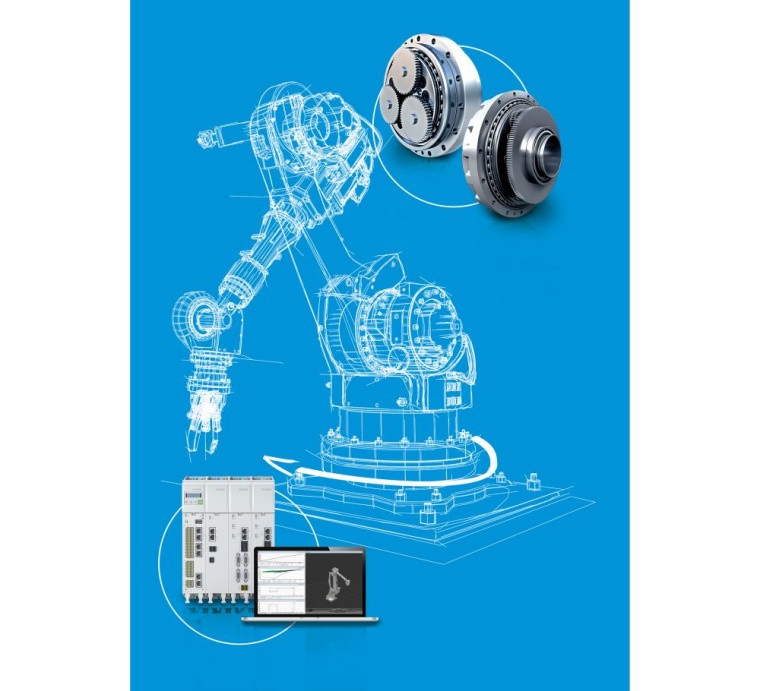
Digital twin in robot control
However, model- and example-specific gearbox data are not only relevant for accuracy, but also an important component of Industry 4.0. Modelling the gearbox behaviour can also provide significant added value with regard to the behaviour along the life cycle. Predictive maintenance, i.e. predictive maintenance with the help of condition monitoring, is the next step through a combination of digital gearbox models and corresponding algorithms in robot control. Aspects of service life can already be included in the design and project planning of robot systems - both through optimised arrangement and through path adaptation.
In the next step, Nabtesco and Keba are working on the evaluation of measurement data during runtime in order to permanently monitor the condition of the gearbox and thus detect impending failures in advance. Real serial number-related gearbox data plays a central role on the way to real-time monitoring of robots, because it enables an individual snapshot of the robot utilisation and thus an observation of the remaining service life of the individual gearboxes. The result: fail-safe cycloidal gearboxes, maximum efficiency and reliability as well as plannable maintenance operations.
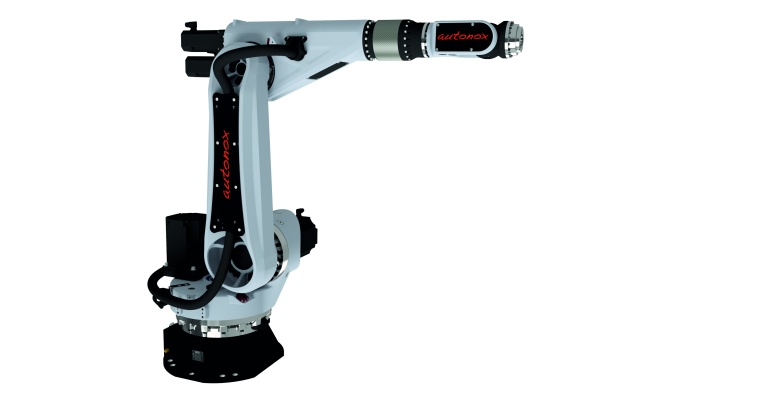
How gear characteristics influence accuracy
In order to better understand the individual robot components and their complex interaction, an interdisciplinary team was formed for the mutual exchange of experience and knowledge. Interrelationships between various optimisation parameters were broken down and, among other things, it is being jointly determined which gearbox-specific features have the greatest influence on accuracy. Nabtesco is responsible for providing and processing the gearbox data as well as the theoretical models. Keba develops the appropriate compensation algorithms and supports the commissioning and accuracy tests.
The first step is to integrate the gearbox data into the control software. In parallel, accuracy measurements are carried out on a 6-axis robot and subsequently the dominant effects are analysed and compensation methods are planned. The third step is to validate the benefits of the selected strategies on the robot. "This is also about building up know-how on questions such as: Which properties are sufficiently accurate and stable? After which times do variable properties have to be re-identified? What influences on the stability of the properties are important? All these questions and their answers must be gradually packaged in the controller," says Christoph Mittermayer.
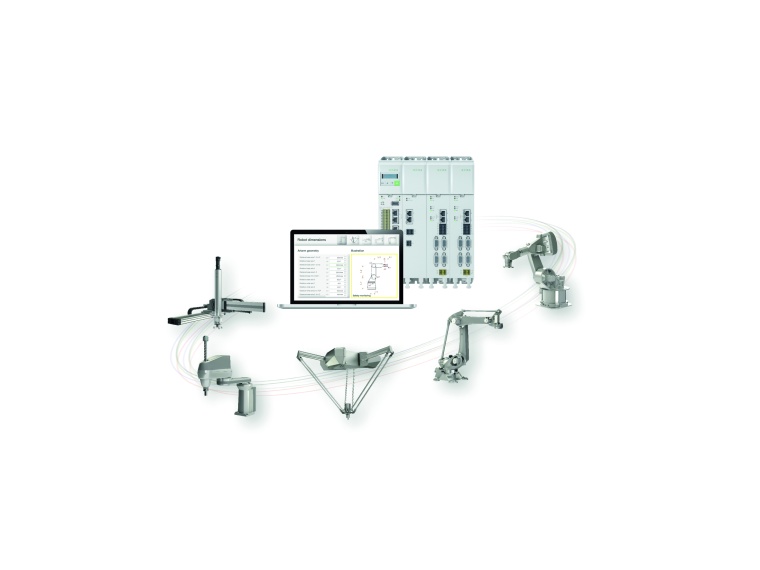
Software statt Sensorik
Im Vergleich zu intelligenter Sensorik bietet die softwarebasierte Lösung zahlreiche Vorteile, unter anderem Kostenreduktion, verringerte Systemkomplexität und bessere Datenqualität. So herrscht auch bei Robotersystemen längst ein enormer Preisdruck. „Zusätzliche Sensorik wird nur dort akzeptiert, wo das Genauigkeitsziel nicht anders erreicht wird oder das Produkt die Mehrkosten rechtfertigen kann“, macht Harald Dumhart deutlich. Zudem bedeutet zusätzliche Sensorik auch eine erhöhte Systemkomplexität – angefangen von der Konzeption und Inbetriebnahme über die Programmierung bis hin zur Zuverlässigkeit des Robotersystems. Ein weiterer Punkt: Nicht alle Daten lassen sich mittels externer Sensoren erfassen. Das trifft beispielsweise auf die Steifigkeit zu – und die Erfahrungswerte aus der Entwicklung. „Bevor ein Getriebe auf den Markt kommt, führen wir umfangreiche Tests durch. Wir wissen genau, wie sich das Getriebe verhält, wann es verschleißt oder welchen Einfluss Temperatur und Schmierstoff haben. All diese Parameter fließen in die Keba-Steuerung mit ein“, erklärt Daniel Obladen. Geplant sind zwei Abstufungen: ein Nabtesco-Add-on mit generalisierten Daten eines bestimmten Getriebemodells sowie ein zusätzliches Upgrade für eine noch höhere Genauigkeit mit den spezifischen Daten der im Endeffekt verbauten Getriebe.
„Genauester Roboter der Welt“
Pionierkunde ist Autonox Robotics, ein Hersteller von Robotermechaniken. Das baden-württembergische Unternehmen konzentriert sich auf die pure Mechanik – ohne Motor, Steuerung und Software. Diese Kinematiken werden mit den passenden Adaptern für die gewünschten Servomotoren ausgeliefert und lassen sich mit allen gängigen Steuerungen betreiben. Das ermöglicht ein durchgängiges Steuerungskonzept von der einzelnen Automatisierungskomponente bis zum Roboter. Für das Vorhaben „Genauester Roboter der Welt“ wurde ein 6-Achs-Roboter der neuen Articc-Baureihe ausgewählt. Die Keotion-Steuerung mit dem Nabtesco-Upgrade arbeitet aber genauso gut mit anderen Robotertypen und -herstellern zusammen. Aktuell lässt sich mit einem Nabtesco-Add-on für die Robotersteuerung die Robotergenauigkeit um den Faktor 9 steigern.
Derzeit befindet sich das Projekt in der Testphase. Erste Versuche und Genauigkeitsmessungen wurden gestartet. Jetzt gilt es, die Kompensationsmethoden im Hinblick auf eine Serienfertigung zu planen und den Nutzen sowie die Validität der Daten zu beurteilen. „Das Thema Genauigkeit hat seit jeher einen speziellen Stellenwert für uns“, so Harald Dumhart. „Durch die Partnerschaft mit Nabtesco konnten wir unsere Modelle verbessern und haben zudem Zugriff auf fertige, maschinenlesbare Getriebe-Datensätze, die direkt von der Keba-Steuerung verarbeitet werden können.“ Daniel Obladen fügt hinzu: „Ein wichtiges Stichwort in diesem Zusammenhang ist Hybridisierung, also die Kombination unterschiedlicher Technologien. Durch die Verschmelzung von Know-how sowie die Verknüpfung der Getriebe mit digitalen Dienstleitungen schaffen wir eine einzigartige Lösung, die in der Robotik ihresgleichen sucht.“
Autor
Jennifer Hagmeyer,
Expert Marketing







